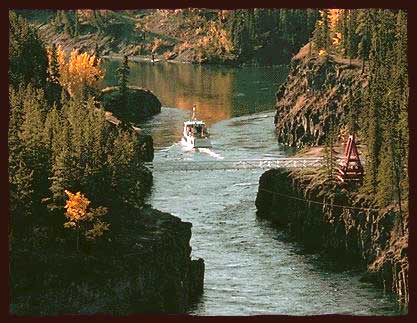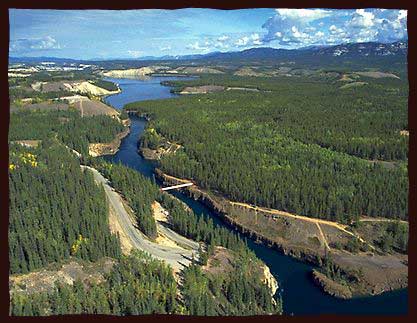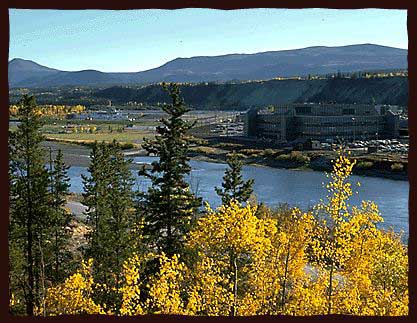Yukon River
Tágà Shäw – Great River – Yukon River
Southern Tutchone
Kwädą̄y ch’äw dän Tágà Shäw kay k’ä̀nadä̀l ch’è. Ätl’a tǟn gà ghàkeyį̀’į. Ä́dè Alaska ts’ä̀n shų kegà nä̀nadä̀l ch’e nà. Kegà shų ts’etläw ts’än mbä̀t ka łänàjèl k’e sambay ätlą ghàkégän nų̄ yúk’e du.
English
The Yukon River has been the main travel route connecting Southern Tutchone with the First Nations to the north, such as the Northern Tutchone, Hän and Gwich’in. Many subsistence activities—hunting, fishing, trapping—are governed by the freeze-up and break-up of the river. The Yukon River has always provided food for the native people, and its salmon and other fish continue to form an important part of the diet of First Nations peoples.
Did you know?
The Yukon River runs 1,979 miles from Marsh Lake to the Bering Sea. Large riverboats used to sail from the mouth, up river to Whitehorse. The last riverboat to carry freight and passengers stopped in 1956. A major feature of Yukon life up until the 1950’s was the riverboat traffic between Whitehorse and Dawson.



